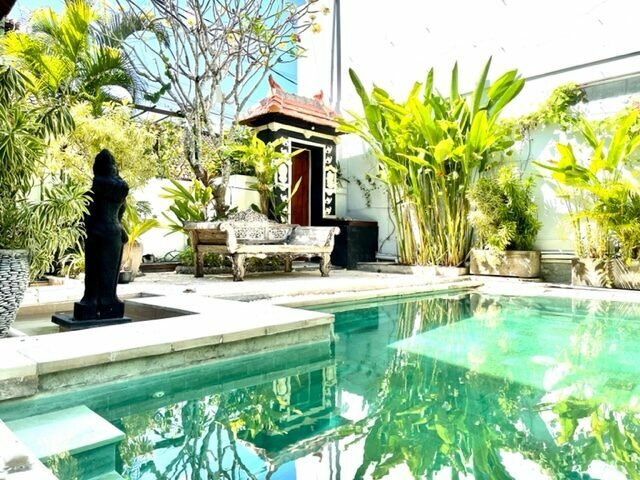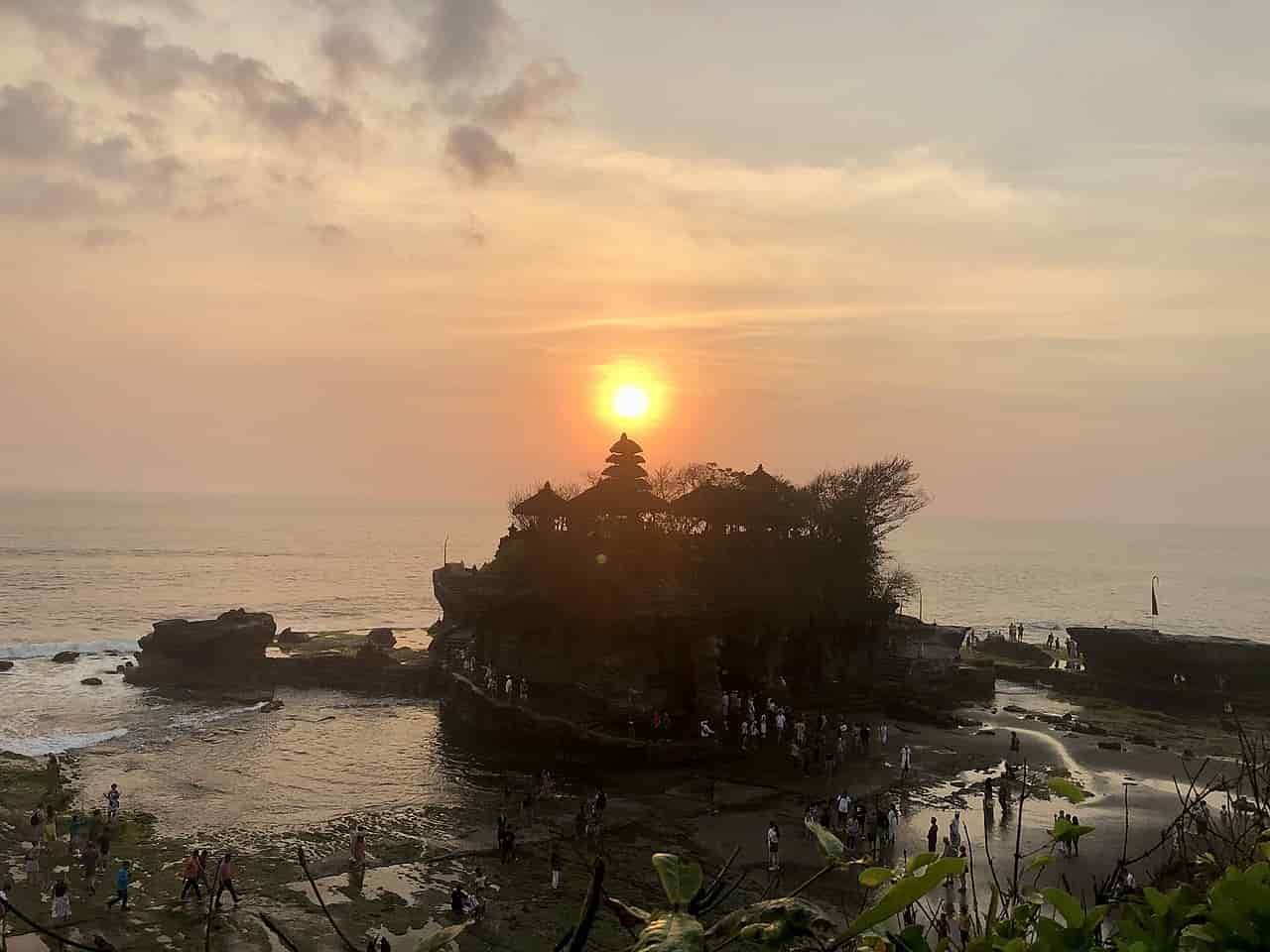Tanah Lot Bali
Have you planned a stay on the Island of the Gods? Do not miss to visit the Temple of Tanah Lot in Bali, Temple of legend, and essential of the island!
When was it built?
Built in the 16th century by order of the priest Nirartha, who came to meditate on an isolated rock in the sea, the temple of Tanah Lot now overlooks this rock. Fascinating and magnificent, draped in an intriguing aura, the site offers an eloquent sight to behold when the waves crash against the walls of the temple, benefiting, moreover, from one of the most splendid sunsets in the world.
What is Tanah Lot?
Tanah Lot is a large offshore rock formation located on the island of Bali, Indonesia, approximately 12 miles from the city of Denpasar and 8 miles from the town of Tabanan in Kediri. The name “Tanah Lot” translates to “Land in the Sea”. The famous geological feature is bordered by the Indian Ocean and has been shaped by wave action over thousands of years to form a scenic rock formation that is considered a cultural icon among photographers around the world. However, the world fame of the rock comes from the temple of Tanah Lot, an ancient temple located on the rock of Tanah Lot. The temple is one of seven temples located along the coast of Bali.
The Tanah Lot temple
Tanah Lot Temple is an ancient place of worship built on the rock off Tanah Lot. The temple is known locally as “Pura Tanah Lot”, which translates to “the temple of Tanah Lot”. While Tanah Lot Temple is considered a Hindu pilgrimage temple, its origin is based on ancient Balinese mythology. According to local legend, the construction of the temple was commissioned by Dang Hyang Nirartha in the 16th century.
Dang Hyang Nirartha was a prominent Hindu figure and traveler, who is credited with founding the Saiva priesthood. According to legend, Dang Hyang visited the rock and rested on it, admiring its beauty and then asked the fishermen who visited him at Tanah Lot to build a shrine on it, which would be used to worship the ancient deities of the Hindu sea. Dewa Baruna, the god of the sea, is the main deity worshiped at Tanah Lot Temple, and Dang Hyang is also worshipped.
Tourism
The historical significance of the temple makes Tanah Lot a top tourist destination on the island. Thousands of tourists visit the site each year, attracted by the cultural heritage that the temple represents, as well as the picturesque nature of the site.
Local visitors have to pay around $1 to enter the site, while foreign tourists pay around $4.5 to visit the temple. The road leading to the temple is lined with souvenir shops where local Bali merchants sell beautiful artifacts. There are also many restaurants on site where visitors can sample local Bali cuisine.
Restoration
The rock began to show signs of weathering in the late 20th century, and by the 1980s sections of its face had begun to collapse. The problem had been compounded by increased human activity at the site in recent years. The crumbling rock placed the temple in grave threat of collapse and made visiting the temple a dangerous affair.
The Indonesian government received a grant of around $120 million from Japan to restore the temple as well as other cultural sites on the island. Restoration work involved the formation of an artificial rock to provide additional support for the temple. Artificial rock is well camouflaged and resembles natural rock in both color and texture.
A paradise for photographers
Photographers looking to impress their friends and family upon their return will fall in love with Tanah Lot. Several sites offer stunning views of the temple, making this destination very photogenic. When the sun lends itself to it, the light is perfect for taking magnificent photos.
Read also: Travel to Bali: the guide to read before your departure
Take an immediate right at the temple entrance and walk through the garden to the top of the hill. From this vantage point, you’ll get an even better view of the temple: huge waves crash against the rocks, creating a postcard-perfect look.
Easy access
Tanah Lot is only a 40-minute drive from Kuta and Ubud, both ideal starting points for a morning temple visit. The atmosphere in Tanah Lot is more mystical early in the morning.
The impressive Hindu temple is easily accessible at low tide as visitors only need to cross the beach to reach the temple. At high tide, Tanah Lot is only accessible by boat. Late risers can also visit the temple at sunset, but expect to encounter more people.
APPROXIMATE ROUTE TIMES:
- Sanur: 1 hour
- Kuta: 1 hour
- Legian: 1 hour
- Seminyak: 1 hour
- Canggu: 45 mins
- Ubud: 1 hour
- Uluwatu: 1h30
- Amed: 3h30
- Munduk: 3 hours
Sources: Villa Carissa Bali, PinterPandai
Photo credit: PinterPandai via Wikimedia Commons (CC BY-SA 4.0)
Have you booked your private villa in Seminyak center?
Located in Seminyak Center – Bali, Villa Carissa offers a private swimming pool and enclosed garden to guarantee your privacy. You can book your private pool villa here with us.
Whether you’re traveling with family, friends, or on a romantic getaway, villa Carissa in Seminyak center offers the perfect base for exploring Bali’s many attractions and enjoying a relaxing vacation.




